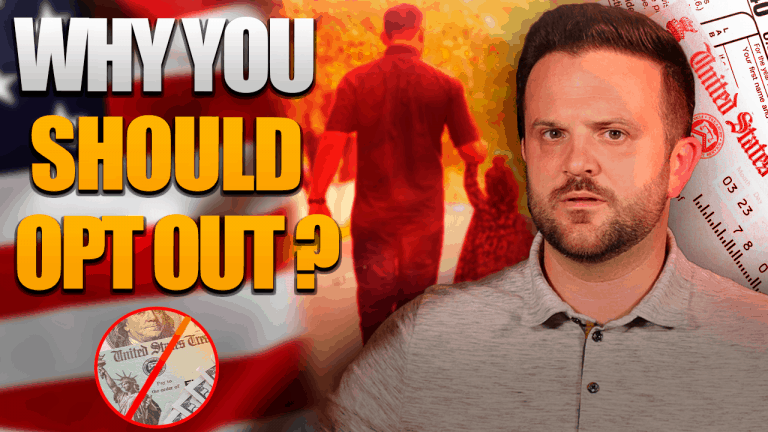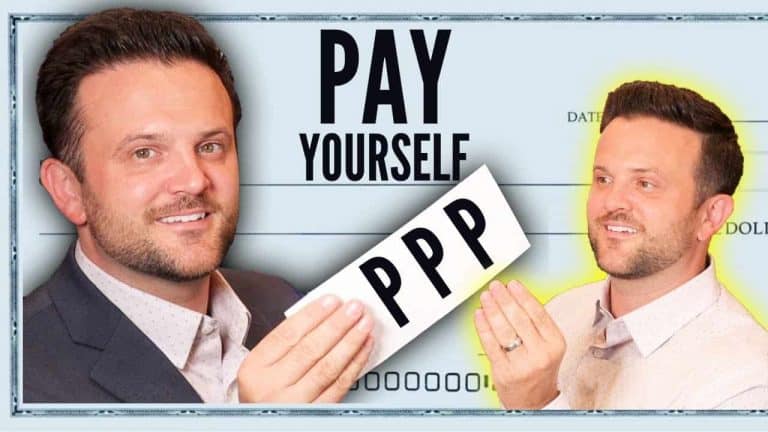Everything You Need To Know About How to Start a Roth IRA for Your Child

Watch the video below to get all of the details about how to start a Roth IRA for your child
Links Mentioned In This Video:
- Rich’s Video Explaining the Best Index Funds – https://teachingmillionaires.com/best-index-funds
- Rich’s Video Explaining the Best ETFs – https://youtu.be/syKnTWesbus
- Vanguard Custodial Roth IRA – https://investor.vanguard.com/ira/roth-ira
- Fidelity Custodial Roth IRA – https://www.fidelity.com/learning-center/personal-finance/retirement/turbocharge-childs-retirement
- SoFi Free Money Bank Account – Get $25 when you deposit $10 – https://teachingmillionaires.com/recommends/sofi-bank-account
[elementor-template id=”5030″]
Video Transcript:
One of the most, truly amazing aspects of investing and money is the power of compound interest. And having a Roth IRA for your child not only is possible, but could help set them up for a future life of financial independence and essentially living life on their own terms. So today I’m going to share with you everything you need to know about establishing a Roth IRA for your child and a few things to consider along the way on whether or not you think this is a good idea. You’re not going to want to miss this.
So you heard right children with earned income can open a Roth IRA, a retirement account that is funded with post-tax dollars. So money that has already been taxed by the government. You then take those dollars and stick them in the account and invest in things like index funds, stocks, bonds, and that money grows over time. And when it comes time for retirement, right now, it’s age 59 and a half that money and all the growth can come out. Tax-Free so the money goes in after it’s been taxed, it grows tax-free and comes out. Tax-Free. Now of course, we’re talking close to 60 years of tax free growth. So a small amount of money today could be worth potentially millions of dollars. Come time for retirement. How do you start a Roth IRA for your child? How early can you start a Roth IRA for your child? I’m going to dive into all the specifics, but before we do, please hit that little thumbs up button, give this video a, like, it really helps with the YouTube algorithm.
It helps it up, get this channel growing and I really appreciate it. So, thanks. So let’s address the question of how old do you have to be to open up a Roth IRA? Well, your children can have you open up a Roth IRA on their behalf, a custodial Roth IRA at any age so long as they have earned income. Now, the IRS defines earned income as salary wages, tips, any other form of monetary compensation? No, it does not include like paying them an allowance for cutting the grass like money. Your parents give you, but if they do any sort of a baby modeling child acting, maybe they decide when they’re old enough to have a lemonade stand or cut the neighbor’s grass. All of that counts as earned income and all of those dollars, every single one up to the maximum amount you can contribute to a Roth.
IRA is allowed to go into that account. Now I know that I’m making this sound a little too easy, and I am going to walk you through how to actually start and open the Roth IRA. And I’ll be honest with you in a lot of ways. It really is easy when you know what you’re doing. It take like 15, 20 minutes and is maybe like three or four steps. So the first thing you want to do step number one would just to be in ensure they’re eligible my children. We have like a local toy store in, in their neck of the woods and they actually hire children, baby models. They pay him something ridiculous, like $50 an hour to come and play with toys. And they take videos and pictures. This is a national brand and everything’s on the up and up. They have you get working papers, medical forms you sign releases open up specific bank accounts for the children, but then when that money gets deposited in those children’s bank accounts, you can take those funds and open up a custodial Roth IRA so long is it’s actual earned tax income.
The other thing I would say is to find the right brokerage firm or investing firm that actually offers custodial Roth, IRAs, not all of them. Do. I think a few of the big ones do like ours is with Vanguard. I think fidelity does, you know, Charles swab. You just have to sort of check around because it’s not a Roth IRA. You’re opening, it’s a custodial Roth IRA. Now step number three, opening the account is sometimes easy. And sometimes you have to provide a little bit of proof like, you know, birth certificates, photo ID, and, and that’s because you, as the custodian, as the parent are going to manage this account until the child is 17, 18, even upwards of 21, 22 years old, it just varies by state law. And then the last step, that step number four is once the accounts open, you have to contribute and pick the investments. Now, every single year, the IRS sets Roth IRA, investment limits. And those are the same for if it’s a custodial Roth IRA right now, or, you know, it’s your own Roth IRA. As at time of this recording, it’s about $6,000 annually. So if the child made 3000, they can contribute the whole amount, 6,000. They can contribute the entire amount. But if for some reason your child is making more than 6,000, then they can only contribute up to that maximum limit. And one little interesting stipulation
Is that where the money comes from, doesn’t actually matter like dollar for actual dollar so long as the child has earned income. So if you, as the parent want to match whatever dollar amount the child actually earns on paper, then for example, if they earned a thousand dollars one year, then you could take money from your account and, and fund their Roth IRA in the amount of a thousand dollars. I guess what I’m trying to say is it doesn’t actually let me grab some, it doesn’t matter. Like here’s like 50 bucks. It doesn’t matter if this $50 goes over here or if the child earned 50 and then you just take 50 from your account and put it in there. It’s more an accounting practice as opposed to an actual physical, you know, dollar that you have to be aware of. I hope that last part made sense. If it didn’t just ask a couple of questions down below in the comments. Now let’s get into the sticking point for many people is how do you actually prove earned income? Well, for children like my own, they might receive a 10 99 at the end of the year. If they earned a certain amount of money from that, from that toy store, from that modeling company,
Then again, maybe they are children who are like in their teens and they get like a, like a W2 from their job at the end of the year, those tax documents, the W2, the 10 99, those are great to use to prove earned income. Now, if that is not possible for one reason or another, maybe they’re kind of just getting like some babysitting money. People are paying them in cash, whatnot. Well, then it’s a good idea to keep your own accounting records. I know that this sounds like overwhelming, but when did they work? Like the dates? How much did they earn like per hour or per job and who paid them and what w what it was for, if you can keep those records, those dates, when, and if anybody ever came asking to show your proof of earned income, you would be able to, and trust me, it’s a very good idea to do that.
And for my entrepreneurs out there, yes, you are allowed to sort of put your children on the books. You can pay them a reasonable wage for doing necessary tasks or business responsibilities. It could be anything from cleaning up the studio to, if they’re good with like video editing, again, a little bit older of a child, they’re, you know, you could pay them for their services. Now I want to dive into real deep here, the benefits of a Roth IRA. If I’m talking parent to parent right now, that’s great. But to any like kids out there, younger, younger folks people that don’t have a Roth IRA, there are a ton of benefits.
Let’s point out the first one. It’s it’s time if you’re using the power of compound interest, and you have a one-year-old who puts 500 bucks in a Roth IRA, then after the first year, let’s just use round numbers. They make 10%. And then that’s 50 extra bucks. And then the next year they put it in another 500 and then they make another 10%. I mean, their money is going to grow year after year, decade after decade. And if they don’t touch it to retirement age, we’re talking a lot of money for a relatively small amount that was initially invested. And another thing to consider is tax efficiency. When you are only earning, let’s say a few thousand, let’s say you earn $10,000 a year. You’re just a kid. You go to school, but you’re in 10,000 a year.
That’s so much money. And you probably are only going to have to pay a small amount. If any amount of taxes on that money, you see children are often in a lower tax bracket if taxed at all. And when you put that money into a Roth IRA, it’s going to grow. Tax-Free when it comes time to take out that money, you can take it out without ever paying any taxes on it. This is an amazing vehicle. And the sooner you can start one, the better. Now this next part is huge. Roth IRAs in the child’s name, Rother is they do not have an impact on financial aid on college aid. Now I’m not going to go too deep into this, but there’s a FASFA form, like a financial aid form. You have to fill out if you’re looking for any sort of financial aid, when you go to apply for college and they ask you like, how much money do your parents have? And then as the kid, as the student, they say, how much money do you have?
And if you’ve got money in a savings account from my grandpa, or like some old like money market account or CDs, all that money counts against the child in terms of getting financial aid. And I know that might be like shocking to you, but it does however, if it’s in a Roth IRA, it does not impact college aid. It does not hurt the child in terms of getting financial aid. So now you can see it’s a great idea for that money to be in the child’s name in the Roth IRA. When an, if they’re going to apply for college and be seeking college aid. And one of the last things I want to point out, it’s, it’s kind of like something I don’t even want to bring up, but the money does not have to stay in the Roth IRA for forever. When I talked to some of my own students, maybe they’re in their teenage years and you’re talking about, oh yeah, just keep this money in there for 40 years. Their eyes sort of glaze over. I mean, they’re like 13, 15 years old. They can’t, they can’t even like fathom how long that is.
Well, the Rother Ray has an interesting, like kind of clause or rule to it that if you contribute money and it has been in there for five years or longer, the, the amount that you actually contribute, then at any time you can, you can take out that contribution and there won’t be any penalties whatsoever. Now I will say that this is a little bit of like a loophole, and there are some like stipulations. A lot of times, if you’re taking out the money, it’s supposed to be for something like a home purchase or paying for school, there are other rules that I’m not going that deep into, but I just wanted to let you know that if as a child you’re looking to invest a Roth, IRA is a great vehicle. And then if, and when you ever did need
The money, it can come out. Even if there’s a small like penalty, or you gotta pay some some taxes on it. Now I should say that there are some, some other stipulations. A lot of times when you’re making these withdrawals, they’re supposed to be for, for a specific reason, like you’re, you’re buying your first house or you’re paying for school. So I guess what I’m saying is there’s other rules I’m not diving deep into, but if you’re thinking like the money’s locked in there for 60 years it, it’s not, there are ways to get it out and ways to get it out without paying any penalties or even paying any taxes.
A couple of key takeaways, a child of any age can open up a custodial Roth IRA with the help of a parent or guardian. The requirement is that they have actual earned income. And no, it can’t be allowance from a parent. It has to be actual earned income that essentially has documentation, whether it’s reported on their own tax return, or you have your own records to keep track of where the money came from and how they earned it. Now, what’s really cool is you can open up one of these accounts and as, as fast as like 15 or 20 minutes, and once you make the contributions, you can pick the investments and you’re off to the races. This investment grows over time in this retirement account, but it doesn’t have to stay in there if life happens and you need to take the money out for some sort of specific life event. Then again, when it comes time for something else like a college, those funds do not even hurt the child in terms of financial aid, because they are earmarked for retirement. So of course, you’re not expected to use those in that financial equation. And one more thing I wanted to point out, I didn’t say before, what
A cool and authentic learning environment for your child, if you involve them in this decision-making process and keep them up to date over the years, not only can they watch their money grow, but when they do those odd jobs, when they, when they start earning money, they can kind of take that financial ownership that they’re going to need to take over time.
As they get older at a much younger age than maybe you or I ever even thought possible. I’ll leave a link down below in the description to a few places where you could open up that Roth IRA. And along the same lines, I have a ton of resources on my website where you could look at different index fund investing or different types of ETFs. So please go there, check that out, listen to the podcast. I really appreciate it. So thanks, please let me know down in the comments, if you have a child Roth IRA and what, what you’re invested in and what your plan is for the future. I’d love to get a little discussion going down there. Also, if you’re new to the channel, please don’t forget to hit subscribe and ring that notification bell. All right. As always I’m Rich and until next time.







